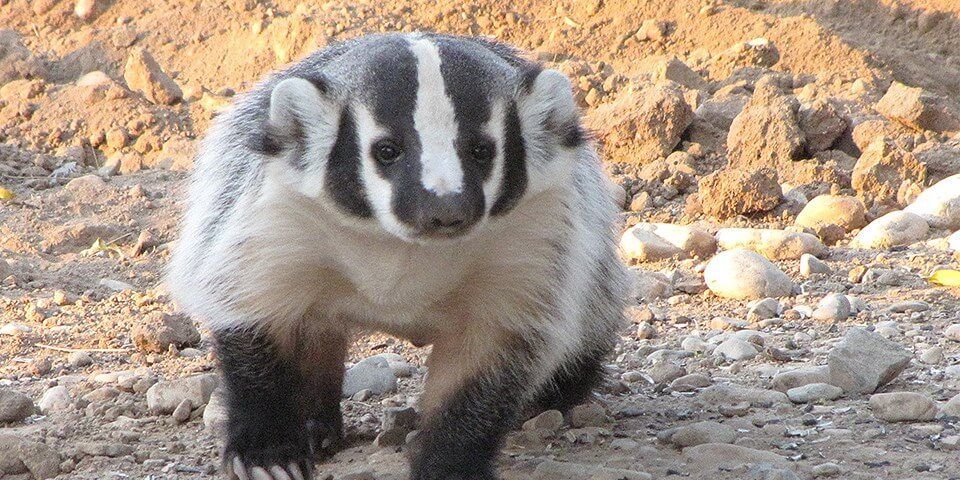American Badger
The American Badger is found from South Central Canada, through the Central United States into Northern Mexico. It inhabits grasslands and parklands, forest edges and even farms, preferably with sandy soils. The small population in Ontario is divided into two parts, a southern population along the southwestern shore of Lake Erie and a northern population in Thunder Bay and Rainy River Districts.
Badgers are solitary animals and only come together to mate in the late summer. Dens are very important to badgers. They often take over the dens of other animals and enlarge them with their strong legs and claws. An individual animal may have several dens. Badgers do not hibernate in the winter. When it is very cold they will remain in their den for several days at a time.
They are carnivores and eat a wide variety of rodents including mice, ground squirrels and groundhogs. Badgers also eat snakes including rattlesnakes.
Badgers are solitary animals and only come together to mate in the late summer. Dens are very important to badgers. They often take over the dens of other animals and enlarge them with their strong legs and claws. An individual animal may have several dens. Badgers do not hibernate in the winter. When it is very cold they will remain in their den for several days at a time.
They are carnivores and eat a wide variety of rodents including mice, ground squirrels and groundhogs. Badgers also eat snakes including rattlesnakes.
Fun Facts
Badgers are most active during the evening and night. A female badger gives birth to one - five young.

scientific classification
Kingdom
Animalia
Phylum
Chordata
Class
Mammalia
Order
Carnivera
Family
Mustelidae
Genus
Taxidea
Species
Taxidea Taxus
did you know?
The population of badgers in Ontario is estimated to be 200 animals. It is listed as an endangered species.
When threatened badgers will hiss and snarl and give off an offensive odour.
Where to find us
There are a pair of badgers at Safari Niagara named Milhouse and Lisa.



